- Home
- T. J. English
American Gangsters Page 4
American Gangsters Read online
Page 4
As a law-abiding patriot, Leonhard had been granted visitation rights to see his children each weekend by the courts of New York State. When they abruptly disappeared one afternoon with his ex-wife’s new husband, Leonhard made the rounds of the local offices of the U.S. marshals, the FBI, and the U.S. attorney. For two years, the Justice Department refused to admit it had had anything to do with his children’s disappearance.
It was discovered that the children had, in fact, been relocated, so Leonhard sued the government. Ultimately, a U.S. appeals judge ruled that since the officials of the Justice Department had “acted in good faith,” the federal court would not second-guess the officials’ “rational exercise of discretion.” Leonhard and the New York courts were bound by the decisions of WITSEC.
This example and others like it illustrate yet another flaw in the program—one that the Marshals Service has never been able to reconcile. In promising to protect the new identities of its inductees, the Justice Department is torn between its obligation to the witness and its obligations to the public. The result is that it is often unable to fully protect the interests of either.
In contrast to the complex and abundant reasons WITSEC has never really worked as intended, the justification for its continued existence—according to those who support the program—is short and sweet: The Witness Security Program brings about convictions.
“You cannot make an organized-crime case in this country without it,” says Richard Gregorie, a former assistant U.S. attorney in Miami who initiated hundreds of people—including Max Mermelstein—into the program during his seventeen-year government career. “Our system of law requires firsthand evidence. Hearsay won’t make a case. Unless you have someone who can put the criminal there firsthand, a conviction isn’t going to happen.”
There is no question that the U.S. government has won a number of impressive victories in the past decade against what it likes to call “traditional organized crime.” Together with the Racketeer Influenced and Corrupt Organizations (RICO) statutes, the Witness Security Program has played an important role in these convictions. Virtually every major Mob case in recent years has relied heavily on turncoat witnesses. Invariably, the promises of the program have laid the groundwork for informant cooperation.
The fact that it works as a crime-fighting tool evidently carries weight with legislators and the public. Both seem resigned to accept the concept of a flawed WITSEC, believing, perhaps, that by fabricating new names and identities for people, our government is proving its daring and omnipotence. The problem, of course, is that by allowing government this power, we are only encouraging arrogance and cynicism, a fact amply illustrated by those who run WITSEC.
The program is now headquartered in Arlington, Virginia, and is run by Gerald Shur. Described by one witness currently in the program as “a small man with a small mind and a God complex,” Shur is often cited by inductees as one of WITSEC’s biggest administrative problems. He is known as something of a monomaniac in the J. Edgar Hoover mold and his decision-making process has been called “dictatorial and capricious” by one former WITSEC employee.
Shur almost never talks to the press, and he turned down repeated interview requests for this article. Doug Tillit, a spokesperson for the U.S. marshals, responded by saying, “Our position is that there are some people who support the program and some who don’t. There’s nothing we can do or say about it.” Shur has always preferred to let those who benefit most from the program—federal agents and government prosecutors—extol its virtues. As for its deficiencies, to say that WITSEC has engaged in a cover-up or two would be a quaint accusation. The program was designed to engage in deception.
It would be a mistake, however, to blame the failings of WITSEC entirely on Shur, or even on the inadequacies of the Marshals Service. The real question is not whether the program is badly administered, but whether or not it can ever be administered.
No single group has a more acute understanding of this than the witnesses themselves. Dozens have turned to the press or the courts seeking an outlet, usually out of frustration with the Justice Department’s lack of accountability.
Most witnesses enter the program in such a state of paranoia and fear that they willingly follow the government’s lead. For every Michael Raymond or Marion Albert Pruett—lifelong criminals who see WITSEC as just one more exploitable branch of the system—there are hundreds whose motives are more confused. Once persuaded by the government to become informants, they have little choice but to see WITSEC in the most helpful of terms, as a kind of redemption, a chance to cleanse their misbegotten souls.
Joe Labriola, a smalltime gangster from Connecticut, was looking for just such a cleansing in 1987 when he was busted for trafficking in cocaine. At the age of fifty-one, Labriola did not want to spend any more time in jail. Despite misgivings, he decided to become a government informant.
As with many criminals who do so, Labriola seemed to crave the approval of his masters. After each trial in which he testified against his former friends, he sought reassurance from the agents and prosecutors, who told him, “You did the right thing.”
Had Labriola known that the suicide rate among inductees into WITSEC was many times higher than the national average, he might have asked himself an obvious question: Why? And he might have arrived at the obvious answer that those in the program were, after all, criminals, just like himself. To believe that the government would ever truly concern itself with his welfare required the kind of wishful thinking of which only truly desperate men are capable.
Throughout his cooperation, Labriola sought to endear himself to the only friends he had left—the lawmen. Often he would cook meals for the police and the prosecutors as they discussed his next day’s testimony. Joe would regale them with stories from his Mob days, and they would all laugh and slap one another on the back. It was almost like old times when Labriola had told wiseguy stories with his buddies until the dim hours of the morning.
But there was a difference. These men were cops and he was not. At the end of each day, they went home to their wives and kids while he slinked around, feeling like a rat, hoping he wouldn’t inadvertently blurt out some small fact that might betray his true identity. The contradictions in his life caused Labriola to suffer bouts of deep depression, which he sought to alleviate through the occasional use of cocaine and heroin.
In May 1990, Joe could take no more. Sitting on the bed in his tiny government-assigned apartment in Springfield, Massachusetts, he swallowed an entire bottle of medication he had been taking for high blood pressure, chasing that with illegal drugs. He left behind a suicide note in which he said he could no longer take the pressures of being a government witness. The last line, scrawled in what looked like a child’s handwriting, read, “Don’t be mad at me.”
“You know,” said a cop familiar with Labriola’s case, “it’s not all that shocking to me. Joe was in a lot of anguish. He never felt good about turning. It was an abrupt change in lifestyle. He was caught between two worlds and wasn’t comfortable in either of them.”
There were no federal agents at Labriola’s funeral. He left the Witness Security Program the same way he entered it. Alone.
2.
RUDE BOYS
Playboy, October 1991
By beating the Italian Mob at its own game—drugs and violence—Jamaican outlaws have become a brutal, bloody force in gangland America.
The raid began as a faint wail, barely audible over the evening hubbub on the streets of Brooklyn. In Crown Heights, an impoverished community well acquainted with the ravages of the drug trade, the sound of approaching sirens was nothing new. But on this particular evening, the residents took special notice as the sirens got closer and louder. As of December 1990, most police activity in the neighborhood had been related to an expanding, violent group known as the Gullymen. Made up primarily of Jamaican nationals, they had become one of the city’s most powerful gangs.
The “rude boys,” as the gangster
s liked to call themselves, had taken over Crown Heights’ thriving cocaine and heroin trade and were living the life of newly crowned drug lords. When they weren’t showing off the lavish accoutrements of their success in the clubs along the main thoroughfares, the Gullymen were ruthlessly reinforcing their criminal power. They took over a fifty-nine-unit apartment building at 1567 Sterling Place, and when the landlord threatened to call the police, he was gunned down in a third-floor hallway, his bullet riddled body tumbling over a railing and landing on the floor below.
“Dem rude boys think dey was God,” said a woman who works in a barbershop near the gang’s Crown Heights headquarters.
Once they were in control of the building, the Gullymen used it to sell dope and provide crash pads for recruits recently arrived from Jamaica. Gunfire echoed loudly throughout the building and out into the neighborhood. It became too blatant for the police to ignore, and on December 6, at approximately 8:00 p.m., a massive caravan of law-enforcement vehicles sped past the dilapidated tenements and shuttered storefronts. At the corner of Schenectady Avenue and Sterling Place, nearly 200 city and federal agents jumped from their vans and squad cars. Four SWAT teams of twenty-five men each began busting down doors and climbing through windows.
At the same time the agents were making arrests and confiscating cocaine, heroin, and illegal firearms in Brooklyn, raids were taking place on Long Island, in Albany, and in Dallas. The following day, front-page stories in the New York Times and the Dallas Times Herald and a report on NBC’s Nightly News trumpeted the busts. A local newscast called it “one of the biggest raids in the city’s history.”
Federal agents familiar with the Jamaican gangs knew better than to gloat. Despite the massive show of force and the many arrests, the gang’s leader, thirty-one-year-old Eric Vassell, was nowhere to be found. It was a sobering reminder of what the police already knew. The posses were here to stay.
With the establishment of crack cocaine as the single most lucrative underworld racket since bootleg liquor, the face of organized crime in America has changed dramatically. The once-legendary five families of Cosa Nostra have been destroyed in court; time has taken its toll. Into that void have stepped the posses, named for the westerns once so popular in Jamaica. Like their namesakes, today’s cocaine cowboys adhere to the rules of the wide-open urban frontier. Old-World concepts of turf and protocol are rarely honored. Because the rude boys’ ability to replenish their ranks seems limitless, even the concept of family is dispensable. Unlike the Mafia or the notorious Chinese Triads, the posses have little or no organizational structure and no apparent blood oaths or initiation rites. Each group has a leader, but there are no godfathers or capos or underbosses.
About the only thing the feds can say for certain is that the posses are more pervasive than anyone first imagined. From 1986 to 1989, there were posse raids in locales as disparate as Miami, suburban Maryland, Rochester, and Kansas City. In one massive raid in October 1988, more than 120 members of the Shower Posse, believed to be the largest in the United States, were rounded up in a sprawling twenty-state bust.
In 1989, the General Accounting Office, an investigative arm of Congress, published a report that identified twenty-one states in which posses had definitely established operations and ten states in which activity was suspected. “In the beginning, we looked at this group almost as a novelty,” says a federal agent who had been investigating the posses for years. “Now it’s become an epidemic.”
In the early 1980s, when Vassell and his fellow Gullymen began selling cocaine on the streets of Brooklyn, the Mafia was still talked about as the only game in town. Most cops knew, of course, that Asian and South American sources controlled the major flow of narcotics, but it was the Italian-American mobsters who grabbed newspaper headlines and were portrayed in movies. The few Jamaicans involved in organized crime were thought to be little more that ganja-smoking Rastafarians who casually sold a little herb on the side.
Law-enforcement personnel knew little or nothing about the politics and economics of the West Indies. Sun, surf, and sand—that was Jamaica. As the 1980s wore on, they would have good reason to know more. On the streets of drug-infested immigrant neighborhoods such as Crown Heights, a new generation was arriving. Raised primarily in the decrepit shantytowns of Kingston, Jamaica’s capital city, these newcomers were hardened gunmen from some of the meanest, most poverty-ridden streets in the Third World. They proved to be the perfect training ground for a group that had designs on the toughest turf in America. In part, the level of violence associated with the posses can be attributed to their perilous position in the drug trade. If the international narcotics business is a buzzing hive, the rude boys are the worker bees, pushing at the retail level whatever the Colombians, the Sicilians, and the Chinese are able to import. And out on the street, dealers and buyers don’t carry American Express. When the deal goes sour, people die.
Even so, within the world of organized crime, where rolling up a high body count may normally be expected to earn you a seat at the head of the table, the rude boys are thought to be hopelessly volatile. More than 2,100 posse-related homicides since 1985 may have something to do with that opinion. Although it would be comforting to dismiss the posses’ penchant for mayhem as the product of an inherently violent class of criminal, it would also be wrong. The roots of their behavior are buried deep in Jamaican society, where grinding poverty, violence, and fratricidal politics have been festering for years in the tenements and back alleys of the island’s capital city.
McGregor Gully is a garbage-choked ghetto in East Kingston. Rubble and broken glass are everywhere. The residents live in crumbling concrete homes sheltered only by thin sheets of corrugated tin. In a nearby shantytown, the streets are teeming: Goats, dogs in heat, and raggedy children amble past graffiti-splattered walls and open-air fruit-and-vegetable stands. Mired in a world of poverty and neglect, the inhabitants of this and a dozen other ghettos just like it have been dubbed “the sufferers.”
It was in McGregor Gully that Eric Vassell got his start. Like many a “Johnny-too-bad” growing up in Kingston’s shantytowns, Vassell became involved in politics at a young age. With few jobs available, the sufferers turn to the political system for sustenance and self-esteem, trusting that the party they back will extend its patronage after the election. As one social activist in Kingston put it, only half jokingly, “Whether or not the party you support is in power determines whether or not you eat.”
As a teenager in the late 1970s, Vassell joined a youth organization affiliated with Jamaica’s ruling People’s National Party (PNP). It was not exactly like joining the Young Republicans; it was more like joining a street gang. Guns were supplied, political contacts established, and the wide-eyed youths were indoctrinated into Jamaica’s rambunctious political process.
Elections had been violent through much of the country’s history, but it took a massive infusion of guns into Jamaican society in the 1970s to produce the current harrowing conditions. The many high-powered weapons that flooded into the country arrived at the same time the CIA, under its director George Bush, was widely reported to have taken an active interest in Jamaican affairs. The American rationale was unambiguous. Throughout the 1970s, the government had followed a leftist doctrine, courting Fidel Castro and the Sandinistas, among others. The opposition party was led by Edward Seaga, a friend of Ronald Reagan.
Destabilization of the Jamaican government paved the way for a Seaga victory. It also forced gunmen employed by the losing side to flee the island and face the victors’ retribution. One favored destination for the losers, of course, was the United States, and this tide of well-armed Jamaican refugees produced America’s initial wave of posse-related violence in the early and mid-1980s.
Along with grinding poverty and political violence, Jamaica’s ghetto dwellers must deal with abuse from the island’s security forces. The Council for Human Rights, located in tiny downtown offices near Kingston’s once-thriving port, devotes the m
ajority of its time to investigations of police beatings and shootings. “On a slow day,” says the group’s head, Florizelle O’Connor, “we might get four reports of brutality. When the police are really having a good time, we get anywhere from fifteen to twenty per day.”
Outside O’Connor’s office, in a cramped, sweltering third-floor hallway, residents gather to file official complaints against the police. In the first two and a half months of 1991, the Daily Gleaner, Jamaica’s largest newspaper, reported 156 violent deaths, an average of two a day. Of those, nearly one quarter were killings by police.
A small, finely feature woman dressed in traditional African garb, O’Connor stands at the door of her office. “Here,” she says, nodding toward a group of sufferers who have lost all faith in the law, “this is our future.”
Through a maze of loosely connected one-room shanties, near the back of a bustling tenement yard, a twenty-eight-year-old bicycle repairman named Johnny extends his hand to a visitor. He wears his dreadlocks gathered in a ponytail that flows to the middle of his back. Johnny is not a rude boy, but he knows many young men who are. As a male in his late twenties who is not dead, in prison, or on the run, Johnny is viewed as something of a wise old man in Denham Town. He is at first hesitant to criticize life in Kingston in front of a stranger. Speaking in a heavy patois, he says of those who complain about their lot in life, “Dem people, dey get up inna mornin’ an’ see de sunshine an’ dey curse de sun. Next day, dey see de rain fall, an’ dey curse de rain.”
As Johnny speaks, a scruffy teenage boy walks into his one-room shed. A gauze bandage soaked with blood is stuck to his forehead, and his neck bears a fresh five-inch knife wound. Shaking his head in dismay, Johnny sends the kid away, presumably to have his wound tended to by a neighborhood bush doctor.

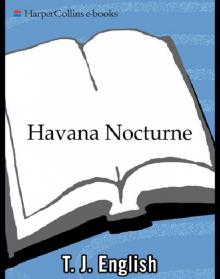 Havana Nocturne
Havana Nocturne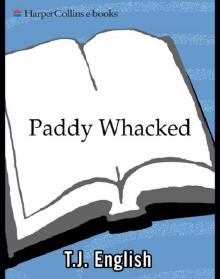 Paddy Whacked
Paddy Whacked American Gangsters
American Gangsters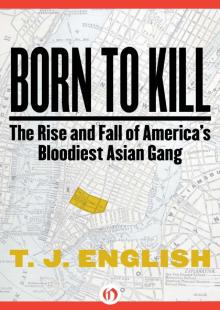 Born to Kill
Born to Kill Westies
Westies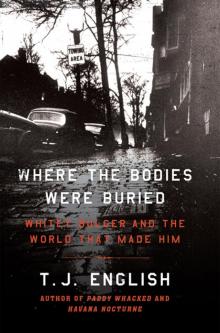 Where the Bodies Were Buried
Where the Bodies Were Buried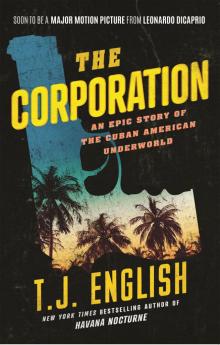 The Corporation
The Corporation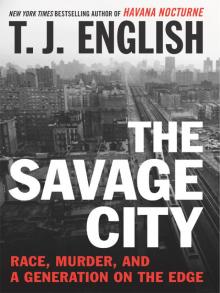 The Savage City
The Savage City